Maybe the most consistently competitive conference in the Power 5 kicks off Saturday. That's a strange thing to say about a league that has the same champion every year (Oklahoma). Although close games dictate every conference battle, they're extremely prevalent in the midlands.
In the Big 12 in 2019, 24 of 46 conference games (52%) were decided by one score; take out Kansas, and it's 57%. Every team but KU played four to six such games in conference play, and it stands to reason that the two with the best records (OU and Baylor were both 4-1) reached the title game.
If someone's winning these games, though, someone has to be losing them. Iowa State was equal to Baylor on paper but went 1-3. TCU and Texas Tech went a combined 1-9 in such games and missed bowls altogether.
Despite the fact that the same team wins the conference just about every year, the Big 12 is a dramatic league full of fun and fraught games. We still have our fingers crossed when it comes to seeing an entire fall slate of college football without cancellations, but whatever games we get in this conference will probably be worth keeping an eye on.
Jump to: Kansas | West Virginia | Texas Tech | Kansas State | TCU | Baylor | Iowa State | Oklahoma State | Texas | Oklahoma
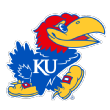
Kansas
Head coach: Les Miles (3-9, second year)
2019: 3-9 (1-8 in Big 12), 104th in SP+
2020 projection: 2-8 (1-8), 115th
Top returning players: RB Pooka Williams Jr., WR Stephon Robinson Jr., LB Gavin Potter, LB Kyron Johnson, WR Andrew Parchment
Kansas wasn't any better in Miles' first season as head coach, but the Jayhawks were definitely more memorable. ESPN+ came to town for the "Miles to Go" series, the Jayhawks enjoyed an out-of-nowhere road romp over Boston College, and they saw a two-week renaissance after an offensive coordinator change ... then settled back into familiar territory. After going 3-9 and ranking 100th in SP+ in 2018, Kansas finished 3-9 and 104th.
The high points were just high enough to perhaps talk yourself into KU having promise moving forward, but it gets harder to believe that when you see who left: quarterback Carter Stanley, three offensive line starters (including LT Hakeem Adeniji, maybe the best player on the roster), the top three defensive linemen, leading TFLs guy Najee Stevens-McKenzie, the top two safeties and Hasan Defense, by far the team's best cornerback. I just listed almost everyone who had anything to do with the aforementioned high points.
There's still a solid skill corps, though. Running back Pooka Williams Jr. is back after posting a combined 1,256 rushing and receiving yards, and leading receivers Andrew Parchment and Stephon Robinson Jr. return as well. During said two-week renaissance, in which new offensive coordinator Brent Dearmon unleashed a creative, fun spread attack and the Jayhawks scored a combined 85 points on Texas and Texas Tech (before averaging 15 PPG the rest of the way), Williams had 308 rushing and receiving yards, and Parchment and Robinson caught 23 balls for 445 yards. Slot man Kwamie Lassiter II is also an option, and Miles signed 12 RBs, WRs and TEs in his 2020 class; I'm not sure I've seen that before.
Guards Malik Clark and Chris Hughes could be solid up front, though the only returning tackle with experience, Earl Bostick Jr., recorded all of seven snaps last year. That could be problematic for whomever wins the QB job, be it senior Thomas MacVittie, junior Miles Kendrick or a freshman.
The turnover on defense isn't good, but it would be scarier if the defense hadn't been so bad. KU was 128th in success rate allowed and 106th in overall defensive SP+. The Jayhawks couldn't force passing downs and couldn't get off the field when they did. Coordinator D.J. Eliot had no answers, and he doesn't have a crop of blue-chippers coming in to save the day. There's a smattering of intriguing underclassmen -- linebacker Gavin Potter, tackle Caleb Sampson, a couple of well-regarded recent recruits in linebacker Steven Parker and corner Jacobee Bryant -- but most of KU's more encouraging moments last season came because of the offense.
Kansas is a projected underdog of at least 12 points in every conference game and needs to beat Coastal Carolina on Sept. 12 to avoid fears of a winless year. Although the Jayhawks will probably give themselves a shot at a couple of high-scoring upsets -- if there's a decent QB in the mix -- any major progress depends on Eliot's making something of a hopeless defense.

West Virginia
Head coach: Neal Brown (5-7, second year)
2019: 5-7 (3-6), 98th in SP+
2020 projection: 4-6 (3-6), 69th
Top returning players: DT Darius Stills, DT Dante Stills, S Sean Mahone, WR T.J. Simmons, S Scottie Young
The offseason after a nice, hard Year Zero is maybe the most uncertain time for a program. The program hit the reset button and lost a lot more games than it is used to, and though there are tons of instances of second-year booms in college football's history, you can't count on one occurring.
That's where things stand for Brown as he enters his second season at WVU. In his first, the Mountaineers saw an up-and-down start -- a blowout loss to Missouri and a tight win over JMU on one hand, wins over NC State and Kansas and a competitive showing vs. Texas on the other -- before mostly collapsing down the stretch. They scored more than 20 points only once after Oct. 5, and though the defense was sturdy enough to eke out upsets of Kansas State and TCU, the Mountaineers slipped from 64th in SP+ in mid-October to 98th, their worst showing since the late-1970s.
From a personnel perspective, you can talk yourself into the defense taking a nice step forward this fall. Tackles Darius Stills and Dante Stills (combined: 26.5 TFLs, 14 sacks, 30 run stuffs) are undersized but dynamite, and the linebacking corps features speedy Josh Chandler-Semedo and Exree Loe and former Alabama blue-chipper VanDarius Cowan, who spent most of last season hurt. The secondary features veteran Sean Mahone, high-end sophomore Tykee Smith and Arizona transfer Scottie Young. There are size concerns overall, and the cornerback position is more raw than you'd prefer, but there's attacking talent.
The biggest question on D: How is it led? Coordinator Vic Koenning was dismissed following allegations of mistreatment in mid-July, and as a stopgap, Brown elected to basically name all his defensive assistants as co-coordinators.
The offense never had a chance in 2019. The run game was horrific -- 129th in rushing success rate, 130th in opportunity rate (percent of carries gaining 4-plus yards) -- which put way too much pressure on a couple of transfer QBs, Austin Kendall and Jarret Doege. Kendall started a majority of the season, but the offense ticked up a smidge when Doege took over for the final month, and it appears that he'll start the season atop the depth chart. Senior slot man T.J. Simmons is a solid possession option, but WVU needs a couple of last year's young options to step up. Six freshmen and sophomores were targeted 20-plus times, but none did much with his opportunities.
All of last year's primary interior linemen return, as does "leading" rusher Leddie Brown, but after last year's abysmal showing, we'll assume these jobs are up for grabs until the first game.
The story for WVU this season is the opposite of Kansas' story: There's promise on defense, but improvement will require a much better showing from the offense. Maybe there's enough experience for that to happen, but in a Big 12 that features six teams projected 31st or better in SP+, the Mountaineers will need quite a second-year leap to creep back over .500. Possible? Of course. But it's hard to feel incredibly confident.
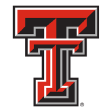
Texas Tech
Head coach: Matt Wells (4-8, second year)
2019: 4-8 (2-7), 54th in SP+
2020 projection: 4-6 (3-6), 60th
Top returning players: QB Alan Bowman, WR Erik Ezukanma, LB Colin Schooler, RG Jack Anderson, DE Eli Howard
Building off the close-game theme, you could basically break the conference standings into three tiers based on the teams that won their not-so-close games.
-
Tier 1: Oklahoma (4-0 in multiscore games), Baylor 3-0, Iowa State 4-1
-
Tier 2: TCU 2-1, Kansas State 2-2, Texas 2-2, Oklahoma State 2-3, Texas Tech 2-3
-
Tier 3: West Virginia 0-4, Kansas 0-6
If nothing else, this helps you see how Tech finished below WVU in terms of conference and overall wins but ranked drastically ahead of the Mountaineers in SP+ in Wells' first season. The Red Raiders' four wins came by an average score of 42-16, and though they had some sketchy moments, they also lost four conference games by 2-3 points each. Granted, this has been an issue for much of Wells' head-coaching career -- he lost nine one-score games in a row at one point at Utah State -- but close-game results are still pretty random, and Tech was close to something more.
They were also without their best quarterback. After missing the last three games of the 2018 season because of a collapsed lung, Alan Bowman missed the last nine of 2019 because of a shoulder injury. Tech was 2-0 and up 14-13 at Arizona when the injury occurred; the season went south from there.
In 11 career games, Bowman has thrown for 3,658 yards and 23 touchdowns. With better injury luck, he could have a lot of fun in this experienced offense. Big, 6-foot-6 senior T.J. Vasher is a solid possession guy, and blue-chipper Erik Ezukanma erupted late in his freshman year, catching 19 balls for 365 yards and three scores in the last four games. The skill corps also includes a couple of exciting runners in sophomore SaRodorick Thompson and Alabama transfer Chadarius Townsend, and though the line loses three veteran starters, it returns two all-conference candidates in center Dawson Deaton and guard Jack Anderson, who, like, Bowman, missed most of 2019.
Without Bowman, the offense wasn't what it could have been, but let's not take our eyes off the real 2019 culprit. The Red Raiders ranked 39th in offensive SP+ in Bowman's absence; they were 83rd in defensive SP+ and haven't ranked better than 70th since 2013.
Although Tech has had no trouble attracting good QBs and blue-chip WRs through the years, recruiting on D has been difficult. Wells is attempting to rectify that through transfers -- Penn State's Zech McPhearson started at corner last season, and he'll welcome Arizona linebacker Colin Schooler, LSU safety Eric Monroe, Michigan State linebacker Brandon Bouyer-Randle and Duke linebacker Jacob Morgenstern to the rotation. Veteran coordinator Keith Patterson has a decent pass-rusher in Eli Howard, but the team is without last year's two best playmakers: linebacker Jordyn Brooks and safety Douglas Coleman III. Still, with a healthy QB and progression to the mean in the luck department, the slight upgrade in defensive talent could help the Red Raiders to a decent season.

Kansas State
Head coach: Chris Klieman (8-5, second year)
2019: 8-5 (5-4), 46th in SP+
2020 projection: 4-6 (3-6), 56th
Top returning players: DE Wyatt Hubert, QB Skylar Thompson, LG Josh Rivas, WR Malik Knowles, CB AJ Parker
On paper, Klieman seemed like the perfect candidate to replace a legend like Kansas State's Bill Snyder. He not only succeeded Craig Bohl at North Dakota State but also surpassed Bohl's accomplishments, winning four FCS national titles in five years. He knew how to grow out of someone's shadow and establish his own culture and accomplishments.
Snyder was basically K-State's best and second-best hire, but the Wildcats' level of play slid just enough at the end of his tenure -- two losing records and only one SP+ top-30 performance in his last four years -- to offer Klieman room for growth.
So far, so good. Thanks in part to some of the close wins Snyder was a master of compiling, K-State went 8-5 and hopped to 46th in Klieman's first season. The Wildcats improved a little on offense and defense and a lot on special teams.
Of course, Ron Prince, who replaced Snyder after the legend's first retirement, also looked pretty promising at first -- KSU went 7-6 and ranked 49th in his first season. He went just 10-14 from there. Klieman has a lot of holes to fill on last year's two-deep this time around, especially in the trenches. Five of last year's six primary offensive linemen are gone, as are five of eight defensive linemen. Klieman mined the JUCO ranks for replacements (as Snyder was occasionally wont to do), but it will be hard to avoid a drop-off, especially without last year's skill corps leaders, RBs James Gilbert and Jordon Brown and WR Dalton Schoen.
There are still some known quantities on offense, though. For starters, quarterback Skylar Thompson returns for what feels like his 17th year in Manhattan. He is a decent passer and efficient runner. Plus, sophomore wideouts Malik Knowles, Phillip Brooks and Joshua Youngblood all proved efficient and ready for larger roles, as did senior big-play man Wykeen Gill. Youngblood is already one of the nation's most terrifying return men. He and place-kicker Blake Lynch should assure another strong special-teams rating.
Up front, guard Josh Rivas was a Pro Football Focus favorite. There will be untested players at RB and elsewhere on the line, but it's a start.
Most of the components of a pretty good pass defense also return, from rush end Wyatt Hubert to safeties Wayne Jones and Jahron McPherson to corner AJ Parker. Minnesota transfer Kiondre Thomas has major upside, too. The tackle position is barren of experience beyond senior Drew Wiley, and Hubert could certainly use help in the pass-rush department, but having a sturdy secondary might be the first step to Big 12 success, and KSU clears that hurdle.
In a world without game cancellations, KSU had the schedule for another bowl run because of home games against Buffalo, North Dakota, Vanderbilt, Kansas and Texas Tech. With the new schedule, .500 remains the goal. How well Klieman is able to persist with renovated lines will tell the tale in 2020.
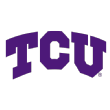
TCU
Head coach: Gary Patterson (172-70, 20th year)
2019: 5-7 (3-6), 43rd in SP+
2020 projection: 6-4 (5-4), 31st
Top returning players: LB Garret Wallow, S Trevon Moehrig, WR Taye Barber, S Ar'Darius Washington, LB Dee Winters
In 2019, TCU had the ball in Oklahoma territory, down four points with two minutes left. The Horned Frogs had the ball in Baylor territory, up three with four minutes left. They were driving to tie or take a late lead against SMU and Kansas State.
If I sprayed this set of facts at you -- along with "they beat Texas by 10," "they put up 450 yards on OSU" and "they held WVU to 244 yards and three turnovers" -- what would you guess TCU's record to be? 9-3? 7-5 at worst?
Nope, 5-7. Max Duggan was a freshman quarterback who played like it at the wrong times, and though the Frogs had a solid defense, their pass rush wasn't good enough to make key stops. Other teams made plays down the stretch, and they did not.
This happens occasionally in Fort Worth. Patterson coaches like someone with extreme job security (because he has it) and doesn't make panicked decisions when his team doesn't have what it needs. In 2013, TCU almost beat excellent Baylor and OU teams and played well against LSU but went 4-8 because of iffy quarterbacking and tight losses. The Frogs went 23-3 the next two seasons.
We probably shouldn't predict that turnaround, but nothing was wrong with TCU last season that Patterson hasn't fixed before.
Duggan is out indefinitely after COVID-19 testing uncovered a heart condition, and it's unclear if or when he might return. Without him and backup Matthew Baldwin, who retired over the summer, pressure could fall onto the shoulders of either former Georgia walk-on Matthew Downing or JUCO transfer Stephon Brown. Not ideal.
Sophomore defensive end Ochaun Mathis showed flashes last season, and Patterson brought in pass-rushers from OU (Mark Jackson Jr.) and New Mexico (Dylan Horton, if eligible) to provide more options.
TCU has to replace first-rounders on the outside in receiver Jalen Reagor and corner Jeff Gladney, but at receiver, Taye Barber and Te'Vailance Hunt each had better per-target averages than Reagor, and Nebraska transfer JD Spielman (898 yards, 18.3 per catch) is both efficient and explosive. At corner, sophomores Kee'Yon Stewart and Tre'Vius Hodges-Tomlinson got their feet wet, at least. With returning studs such as linebacker Garret Wallow and safeties Trevon Moehrig and Ar'Darius Washington, the defense should be at least as good as last year's. If the pass rush picks up, it could be top-20 again.
It's harder to be as confident about an offense that has averaged an offensive SP+ ranking of 79 the past two years and has to replace not only Reagor but also its top two RBs, four starting OLs and maybe Duggan. Patterson brings in a brigade of blue-chip freshmen -- running back Zachary Evans (the top RB in the 2020 class), receiver Quentin Johnson, lineman Garrett Hayes -- and adds Colorado State left tackle T.J. Storment and 2018 starter Kellton Hollins to the line. But a significant upgrade in scoring will require improvement at the QB position, which appears dicey.
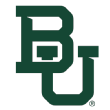
Baylor
Head coach: Dave Aranda (first year)
2019: 11-3 (8-1), 18th in SP+
2020 projection: 6-4 (5-4), 30th
Top returning players: WR Tyquan Thornton, QB Charlie Brewer, LB Terrel Bernard, RB John Lovett, RG Xavier Newman-Johnson
Coaches throw the word "culture" around enough that it can lose real meaning after a while. But here's my general culture guide: When your upperclassmen are serving as assistants when the coaches aren't around, when they're setting examples for and getting buy-in from the younger players, when they're fighting over special-teams roles like it's the starting QB job, you've got a good culture.
When Matt Rhule came to Baylor from Temple, he left a sturdy culture in place in Philadelphia, one strong enough for the Owls to keep playing pretty well despite two more coaching hires in three years. Now that he has gone to the NFL, we'll see if he was able to establish something similar in Waco. Signs point to yes.
Baylor went from 11 losses in Rhule's first season to 11 wins in his third, and even if the Bears benefited from an unsustainably good close-games record to get there, they also jumped up to a sturdy 18th in SP+. With Rhule now leading the Carolina Panthers, former LSU defensive coordinator Dave Aranda takes his place.
Aranda's first staff is a mix of crafty, old veterans such as offensive coordinator Larry Fedora, Baylor holdovers such as associate HC Joey McGuire, old acquaintances such as defensive coordinator Ron Roberts (most recently of Louisiana) and former LSU analysts. It's an exciting staff, but it didn't get a single spring practice session with the team before the coronavirus pandemic stoppage. Whatever success the Bears experience in the fall will require maturity and leadership from within the team and, yes, the culture. There are just enough key upperclassmen returning that you can talk yourself into that working out well.
Quarterback Charlie Brewer is back after combining 3,161 passing yards with 536 pre-sack rushing yards in 2019. His line returns seven players with starting experience (including all-conference contender Xavier Newman-Johnson at guard), and his skill corps is a combination of explosive veterans (WR Tyquan Thornton, RB John Lovett) and intriguing youth (RB Qualan Jones, WR Jaylen Ellis). Fedora is a spread old hand and should know what to do with what he inherits.
The defense, however, gets a makeover. Considering how good it suddenly was last season (18th in defensive SP+ after averaging 81st the previous two years), that probably isn't a good thing. The Bears have to replace four of last season's six primary linemen, three of four linebackers and four of five defensive backs. Linebacker Terrel Bernard is dynamite, Arkansas State transfer William Bradley-King could be an instant-impact guy, and the cornerback position is in decent hands with Raleigh Texada and Kalon Barnes. But depth and experience will be massive issues.
SP+ consequently projects quite a bit of defensive slippage but projects the Bears as favorites in five conference games and slight underdogs in two more. They will likely be part of that "tons of close games" morass in the middle of the standings, though we'll see if they can stay on the good side of the Close Games God.
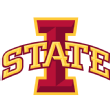
Iowa State
Head coach: Matt Campbell (26-25, fifth year)
2019: 7-6 (5-4), 24th in SP+
2020 projection: 6-4 (5-4), 29th
Top returning players: QB Brock Purdy, S Lawrence White IV, DE JaQuan Bailey, WR Tarique Milton, CB Anthony Johnson Jr.
Iowa State has won two conference championships in its existence: back-to-back Missouri Valley co-titles in 1911 and 1912. The Cyclones have finished ranked in the AP Top 25 just twice: in 1976 (19th) and 2000 (25th).
That made last season pretty cruel.
In Matt Campbell's fourth year in charge in Ames, the Cyclones jumped to 24th in SP+. It was their first time in the 80th percentile of the ratings since 1976. They improved on offense after a 2018 slide, and they jumped to 25th in defensive SP+; coordinator Jon Heacock's funky 3-3-5ish approach has won many admirers in the coaching community.
Per SP+, ISU was the third-best team in the Big 12, just a smidge behind Baylor. But after charging back from 20-0 down to take a late lead in Waco, they fell 23-21 via last-minute field goal. They erased an 11-point deficit to tie Oklahoma State late, then lost via pick-six. They charged back from 21 points down to get to 42-41 against Oklahoma but couldn't convert the game-winning two-point attempt. (For good measure, they fell by one point to rival Iowa, too.)
Maybe the best ISU team in a generation finished 7-6, three games back of a spot in the Big 12 title game -- three points, actually. If you're OU and you suffer some heartbreaks, you know you'll be back in contention the next season. But there's an inherent anxiety with underdogs -- you never know if or when you're going to get another great shot.
Anxiety aside, it doesn't appear that ISU's run with Campbell is anywhere near over. Quarterback Brock Purdy is still only a junior. Purdy finished 18 yards shy of 4,000 passing yards last season, and ISU's offensive turnaround began almost the moment he entered the lineup in 2018. Two of last season's four primary targets -- high-efficiency tight end Charlie Kolar and big-play junior Tarique Milton -- return, as does sophomore running back Breece Hall (1,150 combined rushing and receiving yards). On defense, the linebacking corps boasts a couple of junior playmakers (Mike Rose and O'Rien Vance), the secondary returns almost everyone (including havoc-friendly corner Anthony Johnson Jr. and safeties Lawrence White IV and Greg Eisworth II), and the defensive line gets 2018 star JaQuan Bailey back after a 2019 leg injury.
There are, of course, questions. The offensive line must replace four starters (though sophomore guard Trevor Downing could soon be an all-conference contender), and though the star power is high on the first string at both D-line and linebacker, depth could be a massive concern: three of last year's top five linemen and five of the top eight linebackers are all gone. The title field could get more crowded, too, if both Texas and Oklahoma State improve as projected.
Still, ISU will give itself a shot. Campbell is doing something remarkable there. Coaches Dan McCarney and Paul Rhoads enjoyed decent levels of success, and technically, Campbell hasn't surpassed them yet. But he's close to doing so.
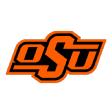
Oklahoma State
Head coach: Mike Gundy (129-64, 16th year)
2019: 8-5 (5-4), 36th in SP+
2020 projection: 6-4 (5-4), 24th
Top returning players: RB Chuba Hubbard, WR Tylan Wallace, LB Amen Ogbongbemiga, RT Teven Jenkins, S Kolby Harvell-Peel
It's funny to think back and realize that at one point during this year, you could have definitively said that Oklahoma State was one of the biggest winners of the offseason.
After a frustrating 2019 season that included quarterback shuffling, only eight games of Tylan Wallace (the all-world receiver tore his ACL in October) and a disappointing 8-5 record, the Cowboys' 2020 stock shot pretty high when both Wallace and 2,000-yard rusher Chuba Hubbard announced they'd be foregoing the 2020 NFL draft and returning to Stillwater. The Pokes also landed a key grad transfer when 2018 all-conference guard Josh Sills announced he was transferring from WVU to OSU. Combined with the return of 10 defensive starters, it was easy to see a pretty big rebound coming.
Then came the Mike Gundy Public Apology Tour. In April, he had to make one for what we'll diplomatically call not completely educated thoughts about the dangers of the coronavirus. Then he had to make a rushed series of them in June after he was pictured wearing a T-shirt from One America News, a far-right TV network, and some of his players, led by Hubbard, threatened a boycott.
After all this, it feels strange to pivot back to what OSU will do on the football field, but it's hard not to like the potential of this team.
It doesn't end with Hubbard and Wallace. Quarterback Spencer Sanders flashed massive potential among some scatter-brained mistakes, and new QBs coach Tim Rattay could help develop him. Hubbard remains in the backfield, and the receiver position features not only Wallace but also high-efficiency slot men Dillon Stoner and Landon Wolf, big-play junior Braydon Johnson (22.6 yards per catch last season) and big LSU transfer Dee Anderson. The addition of Sills means that despite a couple of losses, the line boasts five players with a combined 60 games' worth of starting experience.
Defensive coordinator Jim Knowles has all the experience and attacking pieces he could want. The trio of Kolby Harvell-Peel, Tre Sterling and Jarrick Bernard is as physical and nasty as any in the country, and corners Rodarius Williams and Christian Holmes (a Mizzou transfer) are lanky and physical. Amen Ogbongbemiga, Malcolm Rodriguez and Calvin Bundage give Knowles three proven, speedy linebackers as well.
We'll see, however, if experience can help with last season's biggest issue: a line that could neither stand up to run-blocking nor rush the passer reliably. OSU ranked 77th in rushing success rate allowed, and on blitz downs, the most obvious pass situations, the Pokes ranked 104th in sack rate. Rush end Trace Ford and every tackle return, but they need to produce.
It will be difficult for OSU to live up to its AP top-15 ranking without massive D-line improvement and consistency from Sanders, but this season offers Gundy one helluva lifeline, from both his offseason mistakes and the fact that, after winning double-digit games six times in eight years, the Pokes have not played to their potential the previous two seasons.

Texas
Head coach: Tom Herman (25-15, fourth year)
2019: 8-5 (5-4), 26th in SP+
2020 projection: 7-3 (6-3), 14th
Top returning players: QB Sam Ehlinger, WR Brennan Eagles, LT Samuel Cosmi, LB Joseph Ossai, DE Ta'Quon Graham
About 12 lifetimes ago in April, I wrote about two teams for which the numbers a) did not buy the hype heading into 2019 but b) were trying to build hype heading into 2020: Texas and Nebraska.
Theoretically, Tom Herman's Longhorns were a disappointment in 2019. They began the season 10th in the AP poll but suffered some frustrating road losses -- 37-27 at TCU, 24-10 at Baylor, 23-21 at Iowa State -- and couldn't offset them with any heroic upsets of contenders such as LSU or Oklahoma. They went 8-5, and only an Alamo Bowl whomping of Utah got them ranked in the final AP poll.
My SP+ rankings, however, projected them 31st heading into last season, thanks primarily to a terribly young secondary and their propensity for playing with fire. Herman teams have the tendency to throw huge punches at heavyweights but do the bare minimum and risk upsets when favored.
Both the secondary and the "bare minimum" problem bit in 2019. SP+ declared this a top-15 team this time around, however, thanks primarily to an expansive amount of returning production.
*Of the 11 defensive linemen and linebackers to record at least 200 snaps last season, nine return, including stars in end Ta'Quon Graham and outside linebacker Joseph Ossai. Seven of these nine returnees were freshmen or sophomores last year and could dramatically improve from a consistency standpoint.
-
Sam Ehlinger returns for his senior season after combining his patented run efficiency (847 non-sack rushing yards and a 57% success rate last year) with improved passing (65% completion rate, 7.5 adjusted net yards per attempts: yards per attempt, adjusting for sacks, adding 20 yards for each touchdown and subtracting 45 for each interception).
-
The skill corps brings back its top two running backs, including high-efficiency Keaontay Ingram, and though the receiving corps loses two go-tos in Devin Duvernay and Collin Johnson, Brennan Eagles is one of the conference's best deep threats, blue-chip sophomore Jake Smith posted Duvernay-esque stats in a backup role, sophomore tight end Malcolm Epps could be ready for a larger role, and Michigan transfer Tarik Black comes aboard as well.
-
The offensive line returns left tackle Samuel Cosmi, one of the best linemen in the conference, plus three other players with at least five career starts.
-
The secondary was not only terribly young but also banged up last season. At the very least, the former issue has been rectified. Thirteen players saw at least 70 snaps last season, and 11 of them were freshmen or sophomores. This is now one of the most experienced and deepest backfields in the country.
If two new coordinators bring what their track records suggest they could -- increased verticality from offensive coordinator Mike Yurcich (formerly of Oklahoma State and Ohio State) and better pressure rates and RPO coverage from defensive coordinator Chris Ash (most recently Rutgers' head coach) -- the Horns are going to be awfully tough this season. They'll maybe even be as tough as poll voters thought they'd be last year!

Oklahoma
Head coach: Lincoln Riley (36-6, fourth year)
2019: 12-2 (8-1), eighth in SP+
2020 projection: 8-2 (7-2), sixth
Top returning players: C Creed Humphrey, WR Charleston Rambo, DE Ronnie Perkins, RT Adrian Ealy, DT Jalen Redmond
The past five years, the Oklahoma Sooners have established a strange niche in college football's ruling class: They are both undeniably the class of the Big 12 and undeniably not among the two or three best teams in college football in a given season.
OU has won the Big 12 and finished seventh or better in the AP poll for five consecutive years, but three of those seasons ended with blowout losses in the College Football Playoff semifinals: 37-17 against Clemson in 2015, 45-34 against Alabama in 2018 (it was 28-0 early in the second quarter) and 63-28 to LSU last winter. The Sooners are in an odd space in which they're far ahead and far behind at the same time.
On paper, it's the same old, same old in 2020. The Sooners are the Big 12's only projected top-10 team, and they aren't far out of the top five overall. But they're still a pretty significant distance behind Clemson and Alabama.
Although the Sooners will be breaking in a new starting quarterback (Spencer Rattler) for the third straight season, they boast the league's most proven offensive line, and the skill corps at the new guy's disposal should be solid despite obstacles: At running back, Kennedy Brooks opted out, and Rhamondre Stevenson could be suspended for a few games. At receiver, Jadon Haselwood is battling back from a spring ACL injury.
Still, receiver Charleston Rambo should be ready for a star turn, and transfers including UCLA's Theo Howard and Marshall's Obi Obialo should help. The backfield still boasts former blue-chippers junior T.J. Pledger and freshman Seth McGowan while waiting for the 246-pound Stevenson and his 8 yards per carry to return.
Defensive coordinator Alex Grinch engineered decent improvement last fall in his first season. OU jumped from a ghastly 84th in defensive SP+ in 2018 to a more tolerable 48th. But that was still the team's second-worst ranking in the past 22 seasons. Experience should portend further improvement this year. End Ronnie Perkins is back, though tackle Jalen Redmond is rumored to be opting out, which would leave Perkins and tackle LaRon Stokes as the only returnees who took more than 140 snaps last year. Juco transfers Perrion Winfrey and Joshua Ellison will need to make a difference quickly. This is also a dramatically undersized front compared to most top-10 peers -- Winfrey is the heaviest guy at 297, and none of the primary returnees logs in at 280 -- and though you can get by with speed over size in the Big 12, you need both in the CFP.
At linebacker, pass-rusher Nik Bonitto is exciting, and junior DaShaun White is battle-tested. The safety corps has experience, and cornerback Tre Norwood could provide a boost after missing 2019 because of injury.
When the status quo includes beating your rivals and lifting a trophy every year, it can't be all bad. But Riley still doesn't have the Sooners quite where he probably wants them to be, and I'm curious to see how he attempts to make up ground while maintaining all of the advantages OU has in-conference.
"football" - Google News
September 10, 2020 at 10:58PM
https://ift.tt/3k9iA67
Big 12 college football season preview - ESPN
"football" - Google News
https://ift.tt/2ST7s35
Shoes Man Tutorial
Pos News Update
Meme Update
Korean Entertainment News
Japan News Update
Bagikan Berita Ini















0 Response to "Big 12 college football season preview - ESPN"
Posting Komentar